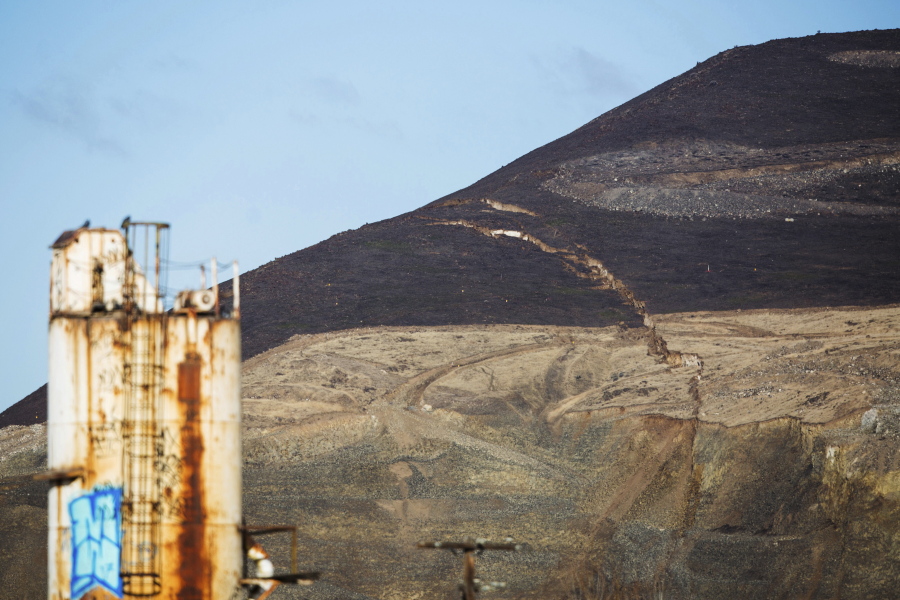Why not use explosives to blast the massive slide on Rattlesnake Ridge near Yakima, shattering the slope before it collapses in the coming weeks?
Because a controlled blast, a common way for transportation crews to clear away rocks around highway projects, would actually make the hillside more unstable, the Washington Department of Transportation said in a blog post Wednesday.
And the necessary drilling to install the explosive charges would put crews’ safety at risk.
“From the outside, it makes some sense,” WSDOT said. “Drop some charges, trigger the slide and then clean it up.
“But, it’s not quite that simple.”
[ Dramatic new images show Rattlesnake Ridge slide moving over time ]
With the hillside’s movement — about 1.6 feet per week — crews would face an incredible challenge drilling accurately to position the charges without worsening the slope’s slump, WSDOT said. They would need to drill about 20 to 40 feet into the earth.
And precision aside, the charges could potentially malfunction, and then crews would have to excavate through large amounts of soil and rock, looking for the live explosives that could still go off, WSDOT said.
“It’s just too dangerous of a situation to put workers in,” the agency said.
Also, explosives on the slide, which threatens Interstate 82 about 4 miles south of Yakima, would create cracks in other areas and likely spew larger amounts of debris in an uncontrolled fashion, considering its size, WSDOT said.
“When we blast, it’s in very small sections, and then we excavate any loose material after the blast,” WSDOT said.
For perspective, rock blasting along Interstate 90, such as near Snoqualmie Pass, to clear away rocks for widening the roadway has removed roughly 1 million cubic yards over the past five years, or about 200,000 cubic yards every construction year, WSDOT said.
The Rattlesnake Ridge slope, which covers about 20 acres, is about quadruple that total mass.
The slide, deemed “slow-moving” by WSDOT, is likely to collapse in early March, according to data by the geotechnical engineering firm, Cornforth Consultants. But they warn that it could also happen sooner.
“When we say ‘slow-moving’ slide, we mean it could take months before it stops moving,” says WSDOT’s blog post, which answers popular questions from the public about the slide.
Geologists do not expect the land mass to slump in one large chunk, the post says.
The approximately 70 people who live below the hill have all evacuated, and geologists and engineers say the slope is most likely to slump into the evacuated quarry pit at the base of the hill, sparing I-82.
They are expecting rockfall in the surrounding area, potentially impacting Thorp Road adjacent to the freeway, according to the Washington Department of Natural Resources’ web page on the slide. Crews closed that road late last year as a precaution.
But in the worst-case scenario, the slope could send debris across I-82 and potentially into the nearby Yakima River, the page says.
“For now, we’ll keep doing what we’re doing,” the WSDOT post says. “Workers continue to monitor the hillside, gather data and make preparations for when debris begins to come down.”
The Seattle Times’ science reporter Sandi Doughton and archives contributed to this report.



